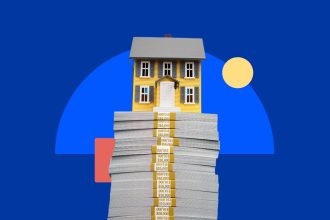Key takeaways
- While debt relief solutions may be helpful when organizing and paying down debt, they can easily result in long-term damage to your finances or credit.
- Common forms include debt settlement, debt management, debt consolidation and bankruptcy.
- To decide which debt relief option is best, evaluate how each will impact your credit score and long-term financial health. Credit counseling can help you choose.
Debt relief is the process of reorganizing your debts to make repayment more streamlined, simple or affordable. You can take different approaches depending on your level of debt and goals. Credit counseling can help you decide what approach fits best.
For example, debt management helps you approach existing debts more strategically. Consolidation doesn’t eliminate debt but may lower your monthly payment. Debt settlement and bankruptcy may eliminate or reduce your debts but will also damage your credit score.
Types of debt relief
Here’s a closer look at the four best debt relief options and when to consider them.
Debt management
Debt management involves using financial tools and planning to help lower — and eventually eliminate — your current debt. You can go through a credit counseling agency or you can set up a management plan on your own.
- Self-led debt management: Creating a debt payoff plan for yourself often involves using repayment methods like the avalanche or snowball approach. This may be a good relief option for those with a handle on their spending habits and are confident in negotiating with creditors. The DIY approach can help you avoid credit counseling fees and allows you to create a plan tailored to your spending habits, but you won’t have the experience.
- Credit counseling: Credit counseling is a free or low-cost option that helps consumers get a better handle on their debt. Often offered by nonprofit organizations or agencies, you’ll be partnered with a credit counselor who will review your finances to help you find debt relief solutions. For example, a counselor may advise starting a debt management plan (DMP).
What is a DMP?
A DMP is a three-to-five-year plan designed to help you exit debt sooner. You will make a monthly payment to the agency, which will pay your creditors.
When to consider debt management
If you want a plan that looks at your entire financial profile and all of your existing expenses, you may want to consider setting up a debt management plan.
Debt settlement
Debt settlement involves working with a third-party settlement company to resolve your unpaid debts. They will negotiate on your behalf with creditors in hopes of getting portions of your debt forgiven.
Once you’re approved for settlement, the company you’ve selected will help you handle the repayment process. You’ll be responsible for depositing a monthly payment into an account the debt settlement company sets up.
The process typically takes between 12 and 48 months. These companies charge a percentage of your settled debts as a fee — typically between 15 percent and 25 percent.
This approach comes with big drawbacks. The debt settlement company will tell you to stop paying your creditors to give it negotiation leverage. You can expect your score to take a massive hit when working with a settlement company. Plus, creditors are under no legal obligation to work with settlement companies. If the debt settlement fails, you will be left with the same debt and a worse credit score.
When to consider debt settlement
When there are no other options available and you don’t wish to turn to bankruptcy, settling your debts may be the best — and only — option for taking care of overwhelming balances.
Debt consolidation
Debt consolidation combines multiple debts under a new personal loan or credit card to streamline repayment. Consolidating makes the most sense if you qualify for a lower rate than what you had on one or more of your previous debts.
Another debt consolidation pro: It can make the repayment process easier. You’ll only have to make one monthly payment instead of multiple. In the case of a debt consolidation loan, that monthly payment will be fixed. But keep in mind that it will include added interest.
When to consolidate your debt
If you have multiple high-interest debts and good credit scores or a co-signer who can help you qualify for a better interest rate or terms, consolidating could be a smart financial move. Start by prequalifying with multiple lenders. Prequalification lets you see your predicted interest rates and eligibility odds before applying, so your credit isn’t impacted.
Look for a lender that meets your needs and offers lower rates than your existing loans. However, only apply or accept the loan if you’re certain you can comfortably make the monthly payments for the entire term.
Bankruptcy
Bankruptcy is the legal process of disputing outstanding debts or financial obligations. Once approved by a judge and court-appointed trustees, you can either qualify for Chapter 13 or Chapter 7 bankruptcy. Unlike with settlement, creditors legally can’t take action against you until the process is over.
Bankruptcy offers a fresh start to those with unmanageable delinquent debts — but it comes with some major risks. Your assets are measured during the process and may be seized to satisfy your delinquent debt.
What’s more, bankruptcy stays on your credit report for up to 10 years. It significantly reduces your credit score and makes it harder to get approved for other loans or financial opportunities in the future.
When to declare bankruptcy
Declaring bankruptcy should be a last resort due to the potential costs and the long-term financial consequences. Declaring bankruptcy may be the best solution if all the following are true:
- You have large amounts of unpayable debt.
- You are already at risk of losing essential assets — such as your car or home.
- You don’t qualify for other forms of relief.
- We recommend consulting a bankruptcy attorney before starting this process.
Which debt relief option is best?
There isn’t any one single best debt relief option. What’s best for you ultimately depends on your debt burden and how long you’ve been unable to repay your balances.
However, the most efficient method of paying down your debt while having the smallest impact on your credit is likely the best option for you. Just remember that most debt relief options aren’t immediate and will need to fit your long-term financial goals.
Explore all of the relief methods and consider the full impact of each before making a final decision. Research companies’ reputations and beware of potential scams on the market as you pursue a path to relief.
Read the full article here














